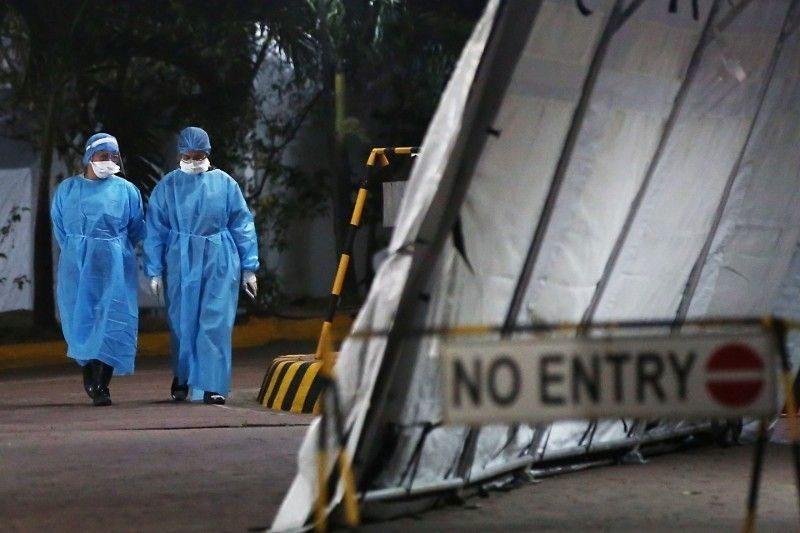Hospitals able to absorb spike in COVID-19 cases, for now

MANILA, Philippines — Hospital resources are still able to cope with the renewed spike in coronavirus disease-2019 (COVID-19) cases in Metro Manila that came with the area’s reopening to business, industry officials said on Monday.
“I have not received any reports,” said Dr. Rustico Jimenez, president of the Private Hospitals Association of the Philippines Inc. when asked whether hospitals are getting overwhelmed by COVID-19 patients.
Dr. Jose Santiago, president of the Philippine Medical Association, another industry group, agreed. “Some private hospitals can still accept COVID-19 patients,” he said in a phone interview.
Fresh concerns over hospitals getting swamped by COVID-19 cases resurfaced last Sunday when the health department reported a new record-high 2,434 in virus cases, 1,069 of which were recorded in the National Capital Region (NCR).
The trend was sustained on Monday when 998 of 2,099 new COVID-19 patients were tracked in Metro Manila. A total of 466 patients were from Central Visayas, where Cebu City under a stricter enhanced community quarantine is in effect until July 15.
Unlike Central Visayas however, NCR’s quarantine protocols had been relaxed since June 1 to a general community quarantine (GCQ), and since then, more businesses have opened, public transport have resumed at limited capacity, while more people were allowed to go out of their homes.
Santiago said the transition to GCQ can be “partly blamed” for the rise in cases, but added that most cases were either asymptomatic or show mild symptoms and therefore needing no to less period of confinement.
This, in turn, has saved up some hospital beds, which according to presidential spokesperson Harry Roque early Monday morning, have not been fully occupied. “Under our agreement with the hospitals, 30% of all bed capacity should be allotted for COVID-19. As of now, the 30% allocation has not been breached,” he said in Filipino.
Santiago echoed Roque’s assessment. “Usually, less than 2% of coronavirus patients are sent to (intensive care unit) because of their critical condition. But not all cases are admissible,” he said.
At St. Luke’s Medical Center in Quezon City and Taguig, the hospital management said in a statement it has 70% admission rate based on the designated beds for COVID-19 cases. “In spite of the number of positive cases continuing to rise, our hospitals remain fully equipped in handling any medical concern,” St. Luke’s said.
Policymakers are trying to avoid a repeat of the dire situation in March before the lockdowns when both bed space and hospital manpower were stretched by an influx of COVID-19 cases, preventing them to treat patients with other ailments.
Lockdowns were imposed to slow virus transmission and allow hospitals to breathe, but the methods only buy time for the health sector to trace, test and isolate cases before they can spread the virus further.
Since then, while testing has been ramped up to around 17,000-18,000 a day, the government is still below its goal of 30,000 tests a day.
Although hospitals are weathering the rise in infections, PMA’s Santiago is praying the situation does not get any worse. “I think we have to really enforce our (general community quarantine), mask wearing and maintaining social distancing because we forget these sometimes,” he said.
- Latest
- Trending





























